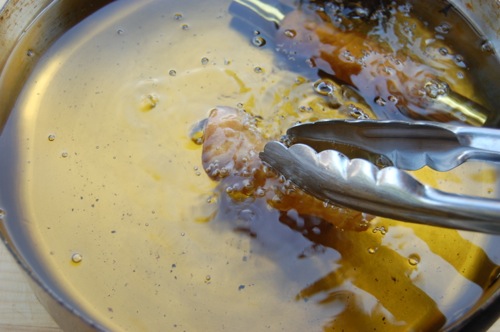Seasoning a Pan With a Wooden Handle
Reader Annemarie writes:
This is off topic for this question, but something that you might be able to help me with. A few months ago I won a “Le Crueset” cast iron saute pan, with a wooden handle. I know that you are supposed to season the pan before use, but I’ve only been able to find methods that involve putting the entire pan into the oven. I’m reluctant to do that with the wooden handle. Can you suggest a method? I’ve tried just heating oil in the pan, but that doesn’t do the trick.
Hey Annemarie! First, congratulations on a nice pickup! This is an obvious question, but did the pan itself come with any instructions? I ask because Le Creuset is obviously a very respectable brand, as such the odds are very good that it’s pre-seasoned and all you need to do is start using it. In fact “just using it” is good advice just generally for cast iron. People get overly obsessed with seasoning these days. Plain ol’ use will accomplish the task quicker than you might think.
READ ON
